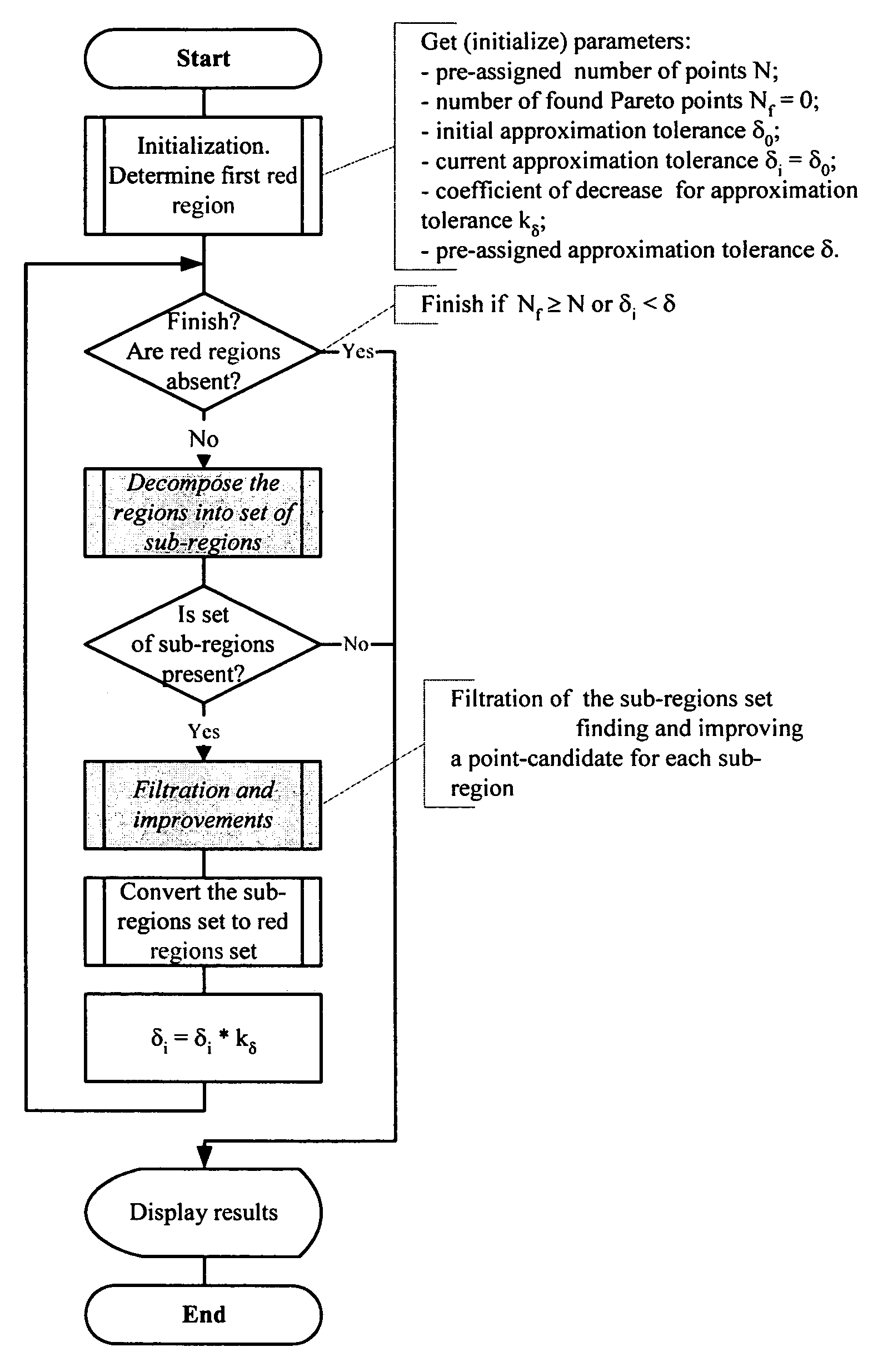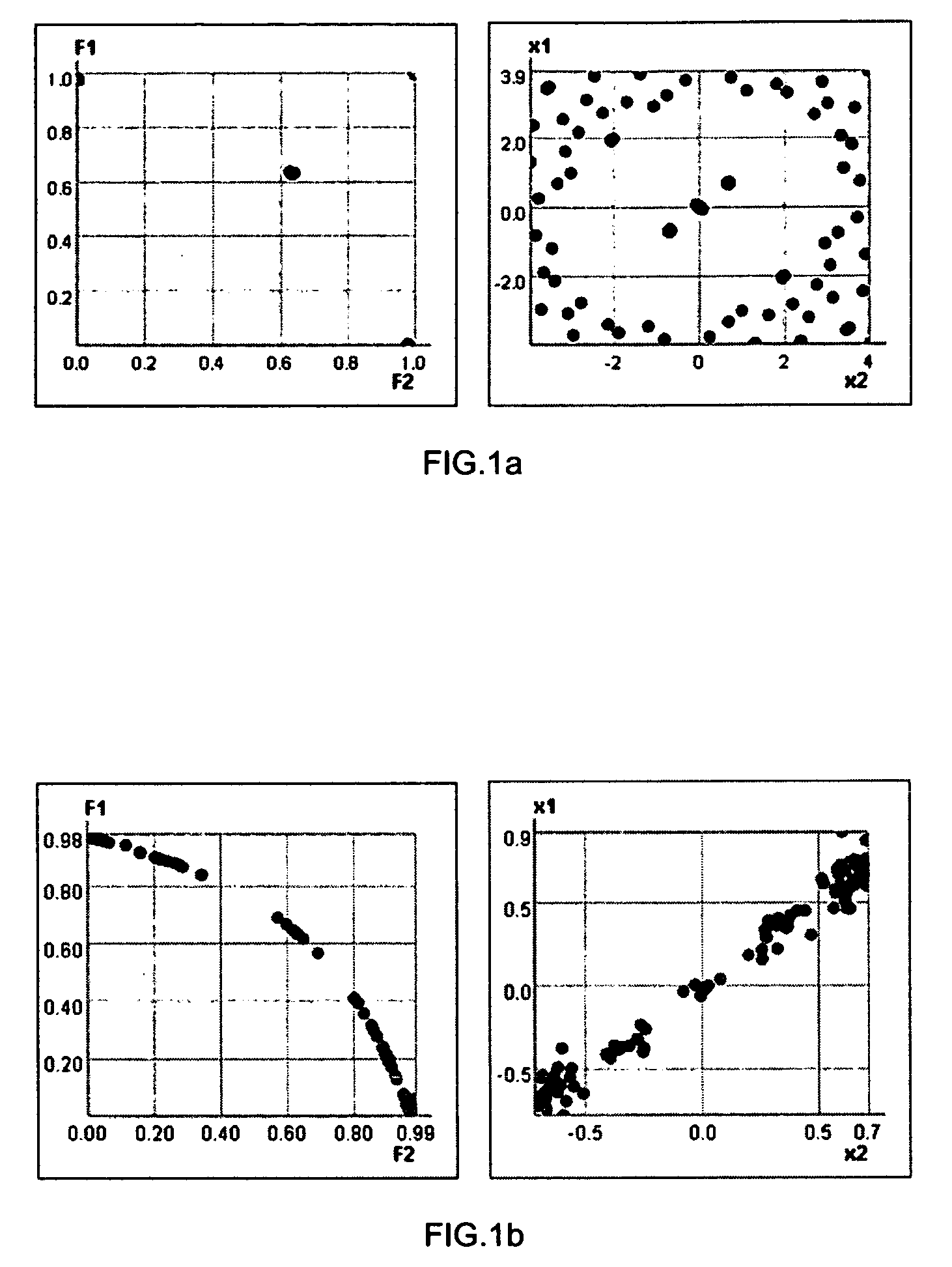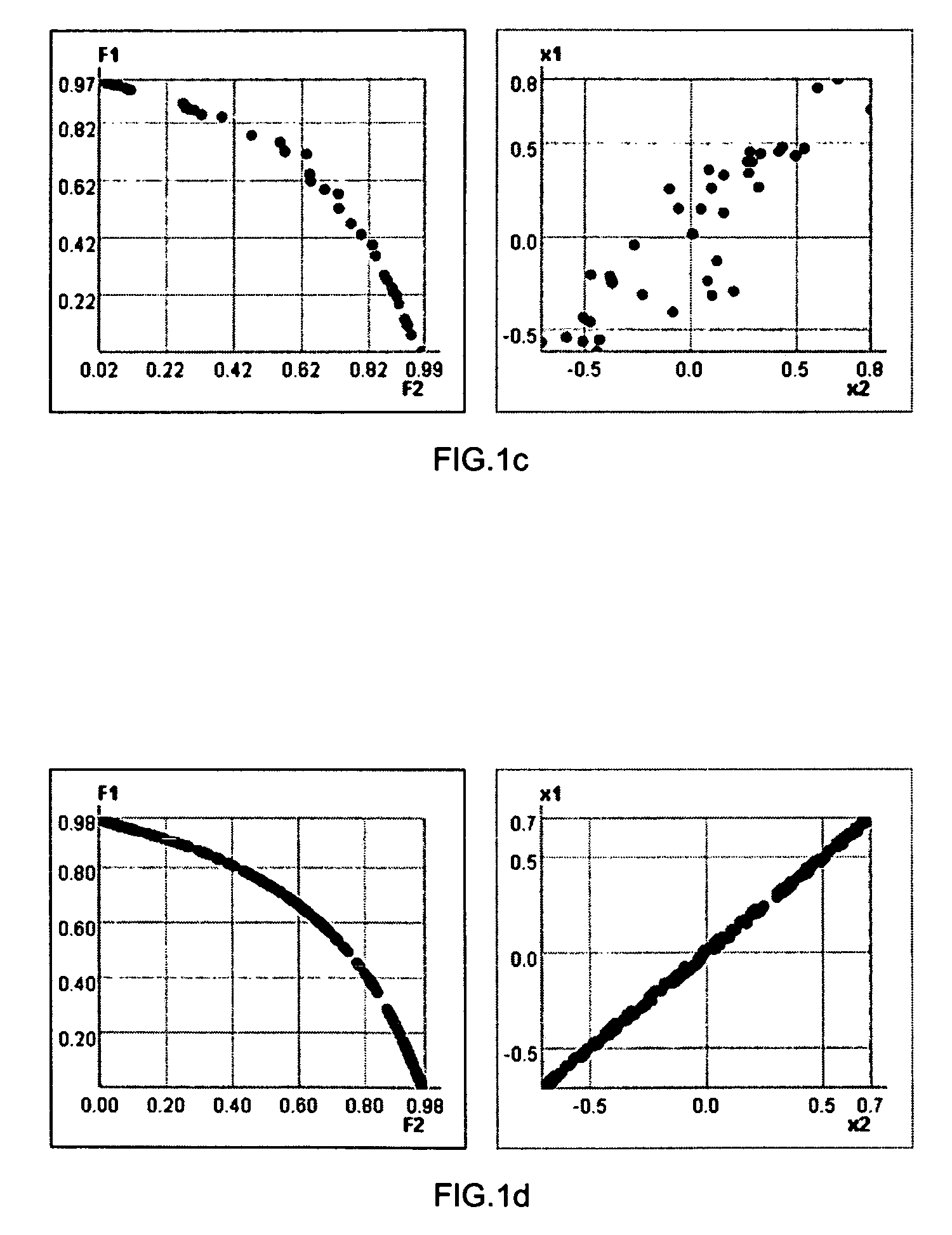Exclusion of regions method for multi-objective optimization
a multi-objective optimization and region method technology, applied in the field of multi-objective optimization methods, can solve the problems of inability to meet the requirements of the design of the ship, inability to meet the requirements of the design, so as to reduce the number of objective function evaluations, improve the computational efficiency, and improve the effect of computational efficiency
- Summary
- Abstract
- Description
- Claims
- Application Information
AI Technical Summary
Benefits of technology
Problems solved by technology
Method used
Image
Examples
Embodiment Construction
General Description of the Exclusion of Regions Method
[0082]The Exclusion of Regions Method (TERM) for multi-objective optimization consists of two main steps: decomposition to find prospective initial regions, and improvement of the points taken in initial regions. Decomposition algorithm finds in design space a set of so-called “red” n-dimensional sub-regions that are likely to contain Pareto points. Then on the improvement stage a point from each “red” sub-region is improved by special iterative procedure until pre-assigned approximation tolerance δ is achieved. Obtained set of points is filtered and output (see FIG. 3).
[0083]Let us consider the decomposition algorithm in details.
[0084]1. First “red” sub-region is equal to the domain that is determined by user in the task formulation. It can be described by the following inequalities:
xli≦xi≦xui, where i=1, . . . ,n. (5)
[0085]2. Then Lipschitz constants are calculated for the base “red” region.
[0086]3. Lipschitz constants and cur...
PUM
 Login to View More
Login to View More Abstract
Description
Claims
Application Information
 Login to View More
Login to View More - R&D
- Intellectual Property
- Life Sciences
- Materials
- Tech Scout
- Unparalleled Data Quality
- Higher Quality Content
- 60% Fewer Hallucinations
Browse by: Latest US Patents, China's latest patents, Technical Efficacy Thesaurus, Application Domain, Technology Topic, Popular Technical Reports.
© 2025 PatSnap. All rights reserved.Legal|Privacy policy|Modern Slavery Act Transparency Statement|Sitemap|About US| Contact US: help@patsnap.com



